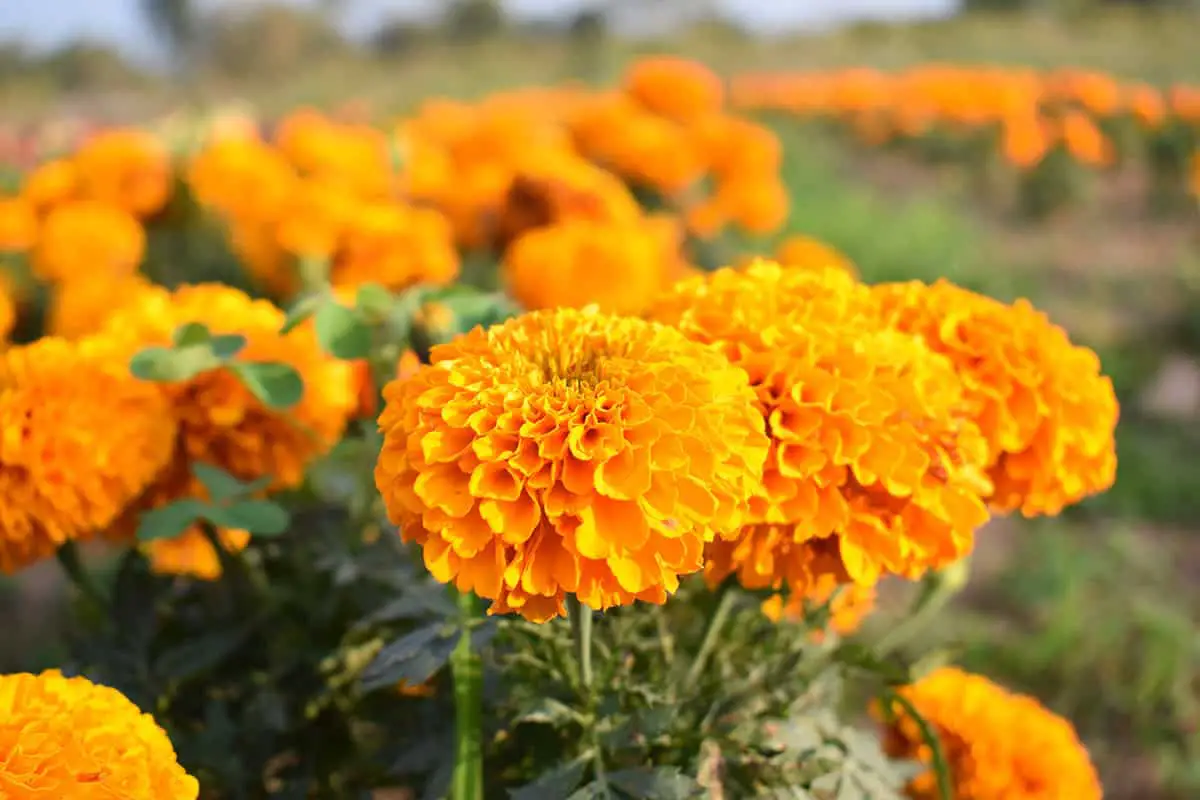You’ve planted your marigolds, eagerly anticipating a burst of vibrant color in your garden. But instead of thriving, your plants are struggling. This is a common scenario due to a few easily avoidable mistakes.
Table of Contents
Overwatering Marigolds
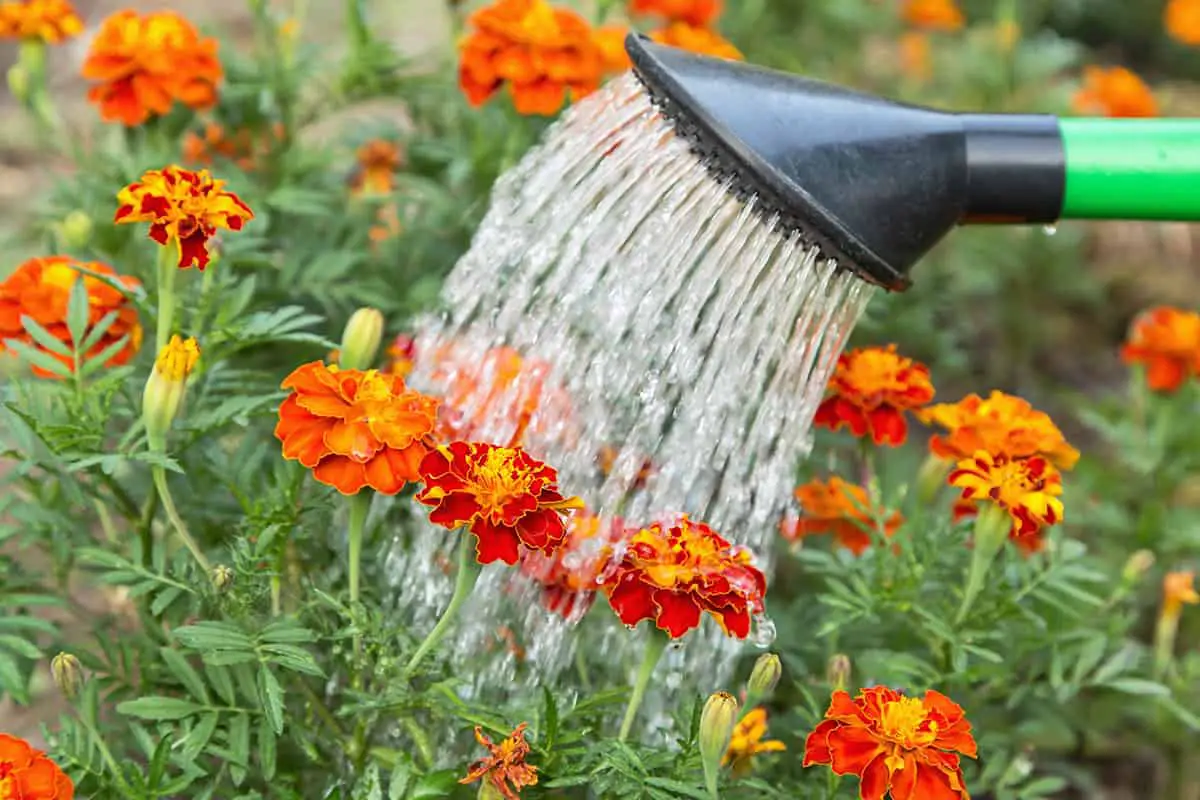
Marigolds suffer when you drench their roots too often. These flowers need well-draining soil to thrive. If the soil stays wet, it can lead to root rot. Your marigolds will show distress through wilted or yellow leaves.
Signs to Watch For:
- Though it seems counterintuitive, overwatered marigolds wilt just like under-watered ones.
- Leaves turning yellow, starting from the bottom, is a telltale sign of excess moisture.
- Brown, mushy roots, unlike the firm, white ones of healthy marigolds, indicate rot.
General Care Tips:
Do a simple soil test. Before you water, plunge a finger into the soil up to the second knuckle. Only water if the soil feels dry at your fingertip. Aim for moist soil, not saturated.
Adjust Watering Frequency:
- In cooler weather, marigolds need less water.
- During hot spells, they may need more.
Remember, it’s about soil moisture, not watering on a strict schedule. When in doubt, wait it out. It’s better for marigolds to be a bit dry than too wet. If you adjust your watering habits, your marigolds can recover and bloom brightly.
Underwatering Marigolds
Marigolds need consistent moisture to thrive. Underwatering can cause them to wilt and stunt their growth. If you notice dry soil or drooping leaves, your marigold may be thirsty. Be sure the soil feels moist at a depth of one inch.
It is vital to understand the water needs of marigolds. They differ across marigold varieties. French marigolds, for example, are compact and may require less water than the taller African marigolds.
To prevent underwatering, develop a regular watering schedule. Watering should be more frequent during hot, dry spells. The morning is the best time to water marigolds. It allows water to reach the roots before the heat of the day. This method also helps prevent diseases promoted by excess moisture overnight.
Recognize signs of underwatered marigolds early. These may include brittle stems and a lack of blooms. Respond quickly by watering to revive the plant. Make adjustments to your watering routine as the season and weather change.
Incorrect Sunlight Exposure
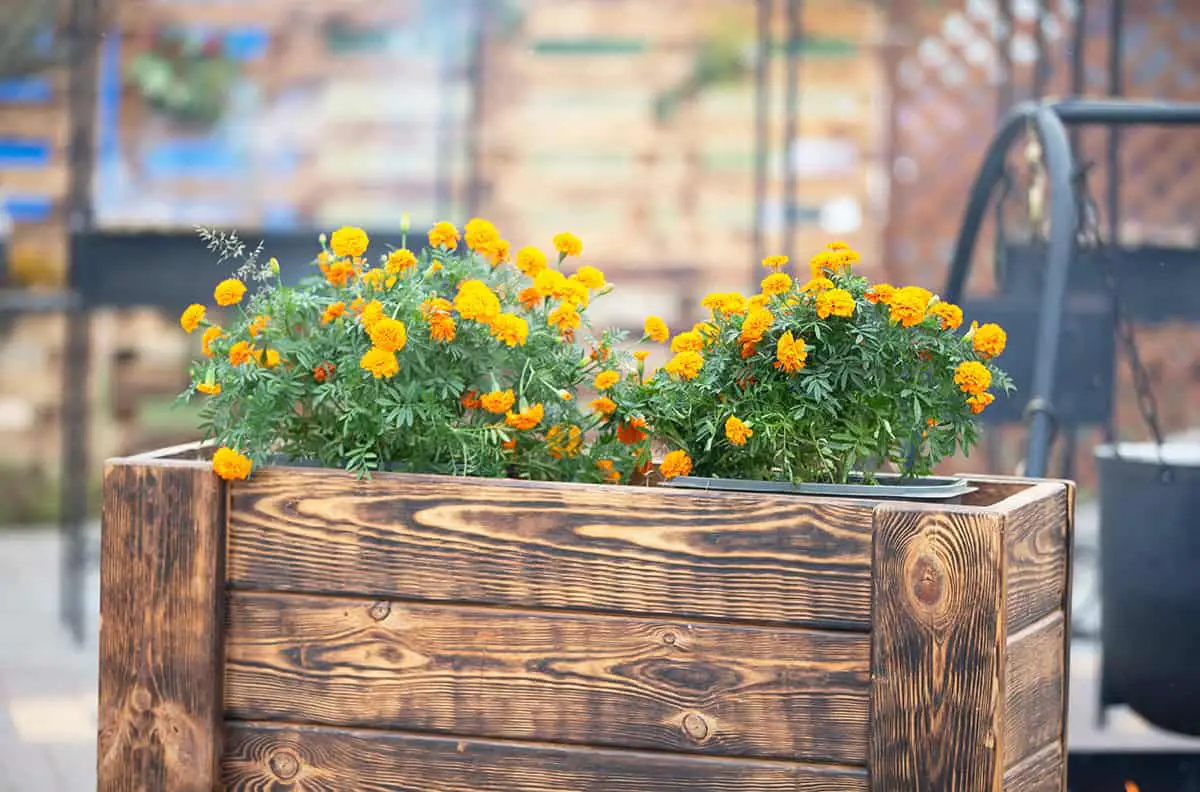
Marigolds need full sun to thrive. If you plant them in too much shade, they won’t bloom well. Your marigolds require at least 6 to 8 hours of sunlight each day. Without enough sun, they become tall and spindly.
In locations with intense heat, afternoon shade helps protect marigolds. However, too much shade can harm their growth. It’s crucial to find a balance. Track the sun’s pattern in your garden to choose the best spot for your marigolds.
Full sun all day ensures robust marigold plants. If you observe your marigolds are not flowering, consider their sun exposure. A common mistake is underestimating sunlight requirements. Adjust their location to match their needs for optimal health and blooming. Remember, marigolds can be direct seeded in the garden once soil temperatures reach 65 degrees Fahrenheit, or larger transplants can be planted when frost danger passes.
Poor Soil Drainage and Fertility
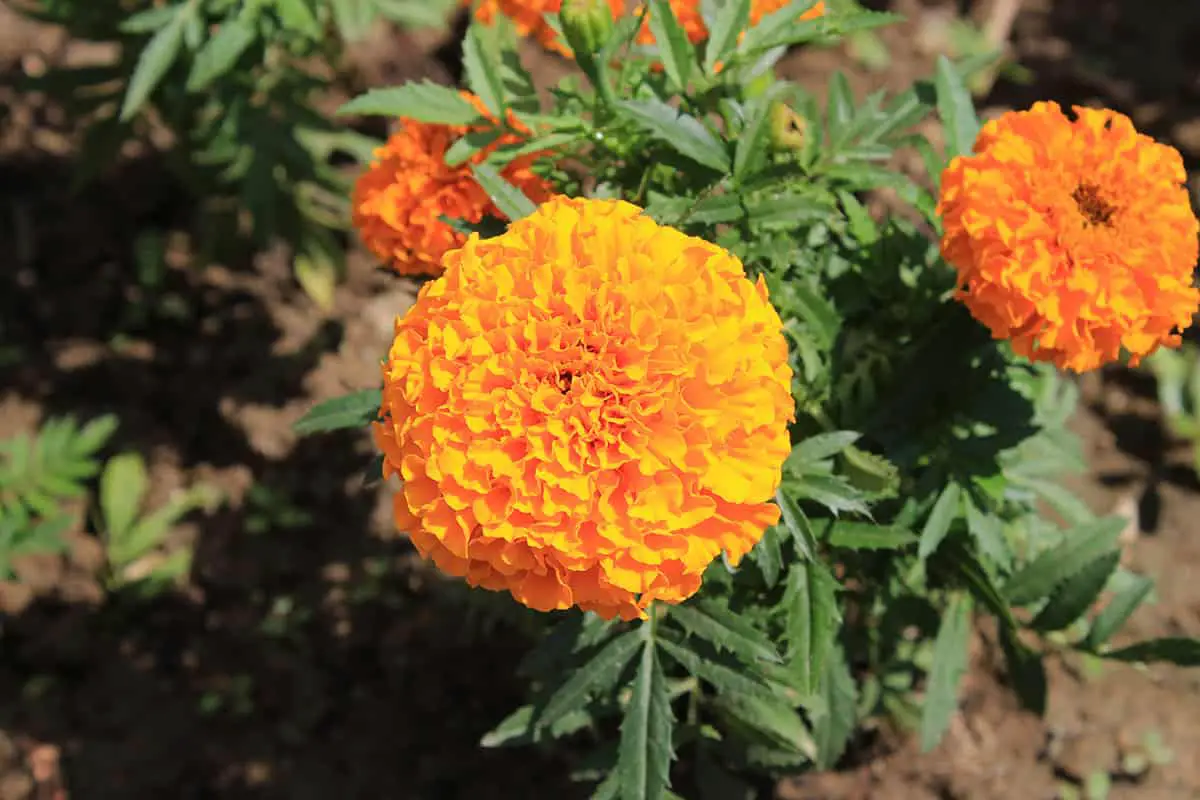
When cultivating marigolds, you must provide well-drained soil. These plants suffer in waterlogged conditions. Poor drainage leads to root rot, a threat to marigolds. To ensure proper drainage, mix in compost or sand, improving the soil’s structure.
Your marigolds need the right fertility balance too. Over-fertilizing can promote excessive foliage at the expense of flowers. Marigolds thrive in soil with equal amounts of nitrogen, phosphorus, and potassium at planting time. Afterward, they require little fertilization, as they are low-feeders.
Remember, soil pH affects nutrient uptake. Marigolds prefer a soil pH between 6 and 7. This range allows plants to have optimal nutrient availability.
Ignoring Soil pH Needs
When you grow Common Marigolds, understanding soil pH is crucial. These plants prefer soil that is slightly acidic to neutral. For optimal growth, aim for a pH between 6.0 and 7.5. If the soil is too alkaline or too acidic, marigolds might not absorb nutrients properly.
Test your soil to know its pH level. You can purchase a soil test kit from a garden center. Follow the instructions carefully for an accurate reading. If you discover your soil’s pH is off, you can adjust it. To lower the pH, you can add sulfur; to raise it, use lime. The University of Wisconsin Garden Facts provides guidance on how to adjust pH levels.
Keep in mind that soil pH can change over time. It’s affected by factors like rainfall and added fertilizers. Test your soil regularly, about once a year, and before planting new marigolds. Marigolds thrive when you meet their pH needs. This avoids common growth issues linked to nutrient uptake.
Planting Marigolds Too Close
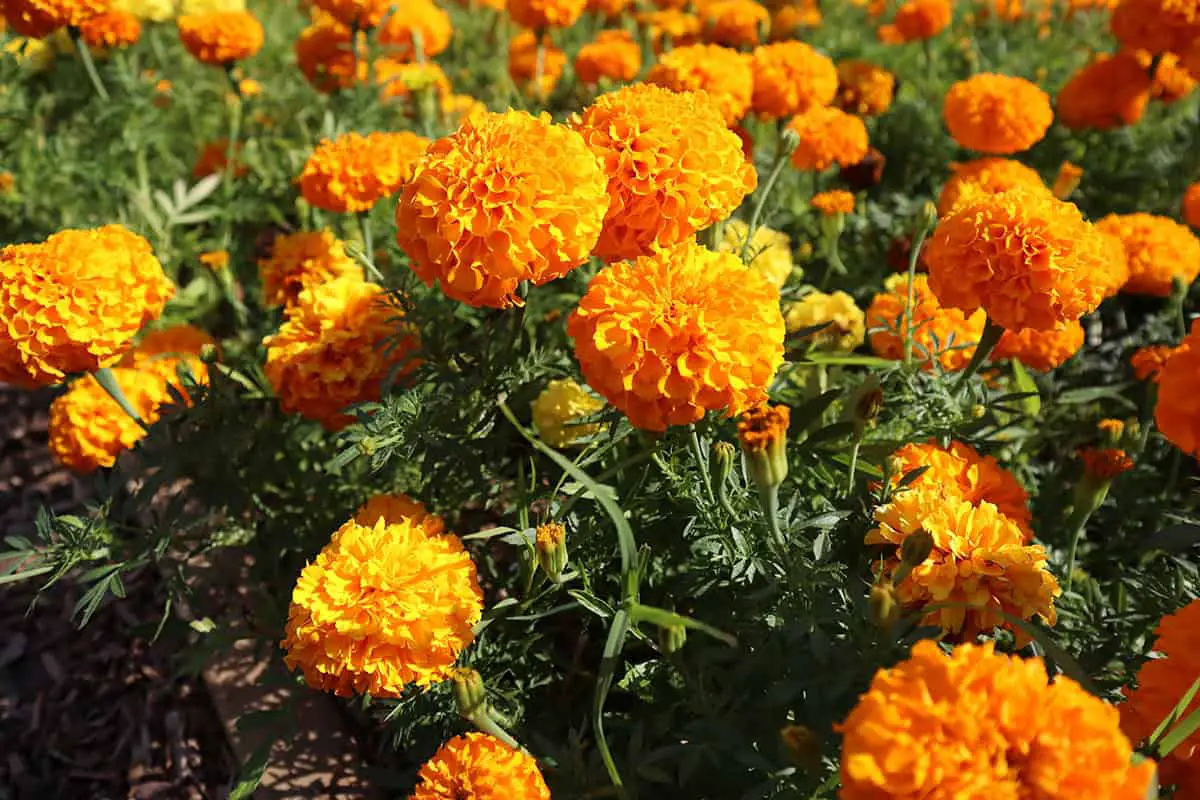
When you plant marigolds, spacing is crucial. These flowers need ample room to thrive. If you plant them too close, they won’t have enough space to develop fully. Ideally, you should place marigolds at least one foot apart. This allows for sufficient air circulation and sunlight penetration.
You should know that marigolds can vary in size. For example, French marigolds are generally more compact, whereas African marigolds are taller and require more space. Consult the seed packet or tag for specific spacing recommendations to ensure your marigolds can flourish.
Proper spacing prevents many issues. Marigolds planted too close together may compete for resources, causing stunted growth. They can also become more susceptible to diseases like powdery mildew when airflow is restricted.
Skipping Deadheading
Caring for common marigolds often involves deadheading, which many gardeners might skip. By not removing the wilted flowers, you affect the plant’s blooming potential. Marigolds thrive when you routinely deadhead them. This action encourages new growth and more vibrant blossoms. It’s a clear and necessary step for a flourishing garden.
Regular deadheading prevents marigolds from spending energy on seed production. This energy is better used for creating fresh, colorful blooms. By cutting back faded flowers, you ensure that your marigolds remain attractive and prolific. This method is particularly crucial during the humid periods where blooms can rot easily.
In your marigold care routine, deadheading should be as regular as watering. Without this practice, your marigolds may appear lackluster and may cease to produce new flowers efficiently.
Inadequate Pest Management
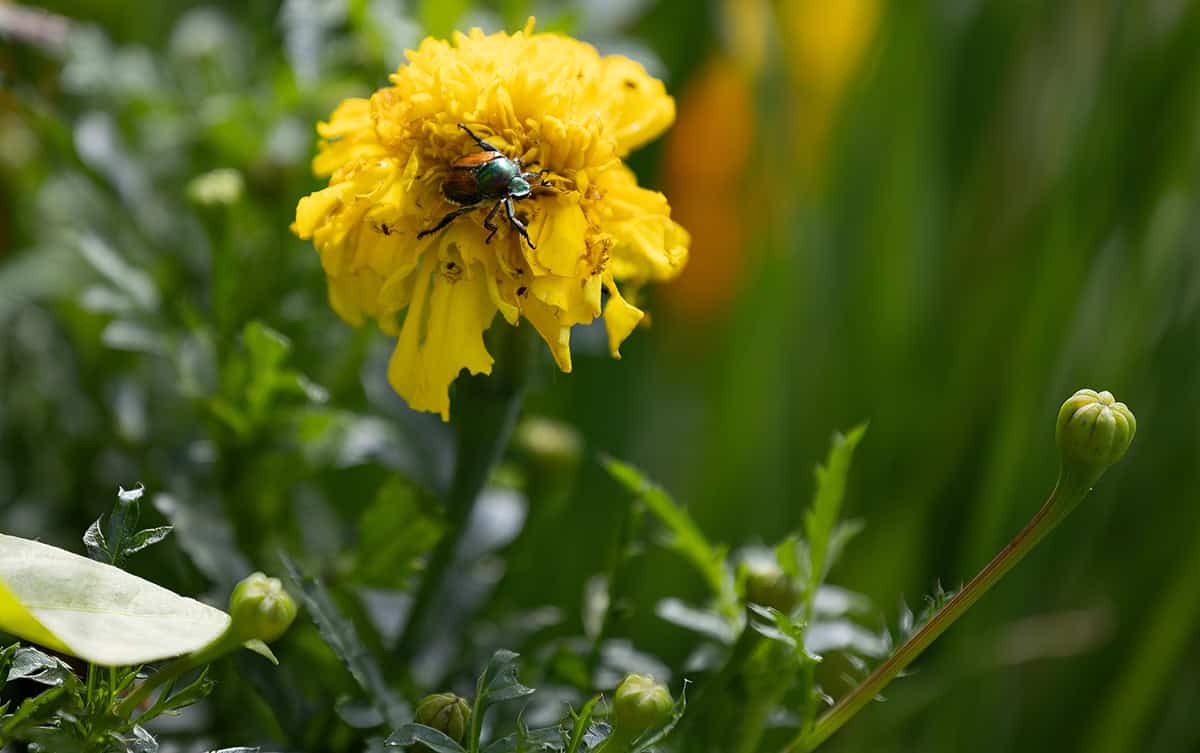
When you grow common marigolds, avoiding pest problems keeps your garden healthy. Marigolds can attract pests like spider mites, which may surprise you. These pests thrive on marigolds under certain conditions, leading to infestations.
Your marigold care should include regular checks for pests. If you notice fine webs or stippling on leaves, you may have spider mites. Act promptly to manage these pests, as they can harm your marigolds and other garden plants.
Effective pest control involves removing infested plants and employing natural predators. Ladybugs and lacewings eat spider mites and protect your marigolds. Avoid chemical pesticides as they can disrupt your garden’s ecosystem.
Overusing Fertilizer
When caring for marigolds, it’s crucial to avoid over-fertilizing. These flowers thrive with minimal feeding. Excessive fertilizer can lead to weaker plants and fewer blooms. Your marigolds need a balance to flourish.
Marigolds perform best in rich, well-drained soil, but too much fertilizer can harm their growth. A gentle approach is key. Incorporate a slow-release fertilizer at planting time and follow label instructions carefully. Over-fertilization can lead to a build-up of salts that damage marigold roots.
Be alert to signs of over-fertilization. You may notice stunted growth or leaf burn. If you suspect over-fertilization, water your marigolds deeply. This can help flush excess fertilizer from the soil.
Not Adjusting Care for Local Climate
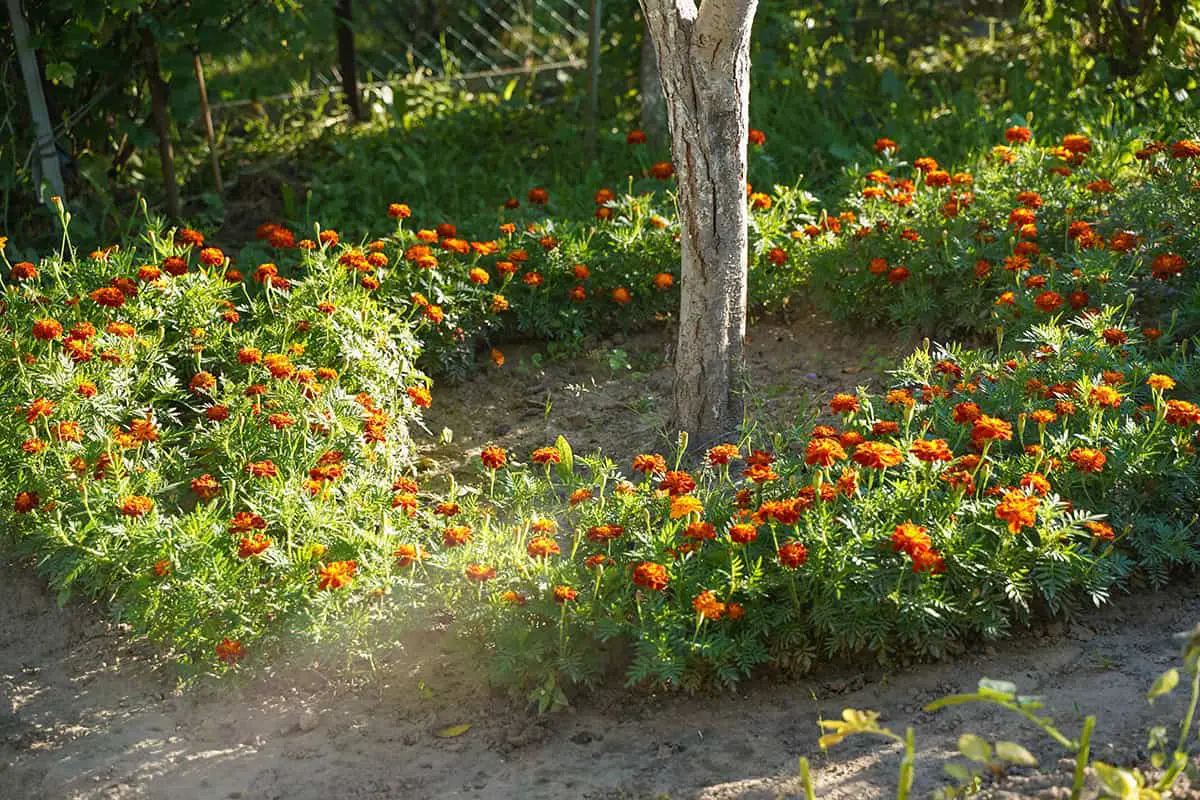
Marigold care mistakes often stem from not considering your local climate. Marigolds thrive in full sun, which usually means they require at least six hours of direct sunlight daily. However, your region’s temperatures and humidity can impact this need.
In cooler regions, marigolds may tolerate more sun exposure without stress. Marigolds in very hot climates benefit from some afternoon shade. This helps prevent wilting or scorching in intense heat.
Proper soil drainage is also essential regardless of climate. Well-drained soil ensures that water doesn’t pool around marigold roots, which can cause rot. In areas with heavy clay soils, elevate your garden beds or incorporate organic matter to improve drainage.
Monitor your marigolds for signs of distress, which can inform you of necessary care adjustments. Drooping or discolored leaves indicate that environmental conditions are not ideal. You can then make responsive tweaks to their care to help marigolds flourish in varying climates.
